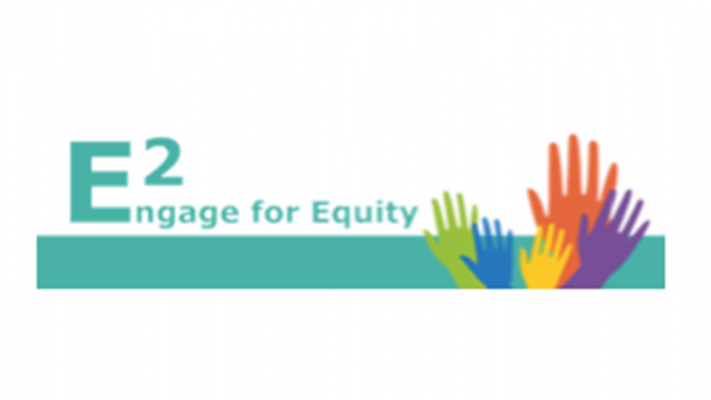
Letter to the White House on the selection of a new NIH Director

 Maxine K. signed
just now
Maxine K. signed
just now  Adam B. signed
just now
Adam B. signed
just now 
The Honorable Joseph Biden
President of the United States
1600 Pennsylvania Ave, NW
Washington, DC 20500
November 12, 2022
Dear President Biden,
As scientists, clinicians, academics, researchers, diverse patient advocates, and community organizations (CBOs), we are deeply grateful for your launch of the Cancer Moonshot, as well as the elevation of the Office of Science, Technology, and Policy to a Cabinet-level position.
We greatly appreciate your efforts to ensure an almost 20% increase in the NIH budget. We applaud and support your goal to nominate the first woman Director of the NIH, a position requiring impeccable scientific credentials and accomplishments. As you consider this critical selection, we write to ask you to take one additional step by considering each potential Directors’ approach to connecting science and society.
We are writing to request that candidates for director are queried on key lessons that the COVID-19 pandemic once again laid bare. The pandemic reminded us of stark and often widening racial and health inequities in morbidity and mortality: Marginalized communities had lower access to testing and below-average vaccine uptake. They experienced higher infection rates; higher mortality; and limited access to innovative effective treatment. Now, there is increasing concern that communities most adversely impacted by COVID-19 will disproportionately experience symptomology labeled long COVID. One lesson we relearned is that science must demonstrate a commitment to producing benefits within each community.
At the heart of our inconsistencies in addressing COVID equitably is a second lesson. The response of research and training institutions as well as our public health and healthcare systems lack ongoing effective engagement with the community. The pandemic reminded us of the central role of community engagement in addressing the needs of our most vulnerable citizens and communities. Unfortunately, despite world-class scientific credentials and accomplishments, many of our leading scientific institutions either don’t know how to effectively engage with local communities - or simply don’t understand the importance of doing so.
History contains stories of numerous, egregious programs in which science and research created distrust in communities of research, medicine, and science: There is the USPHS “Tuskegee Study of Untreated Syphilis in the Negro Male, or lesser-known studies involving the forced sterilization of women in Puerto Rico (1930-1970) or women of Mexican descent in California (1960-1970). There is the recent misappropriation of DNA from a Native American tribe in Arizona (2003). These ethical traumas persist in community fear of the physicians’ and scientists’ white coat uniforms. Alternatively, a plethora of scientific studies show greatly improved outcomes when there are community partners, faith-based institutions, and other sources of community trust and identity involved.
Fortunately, many Institutes and Centers within the NIH now stress the importance of engaging partners, particularly in communities of color, rural, and other vulnerable populations. The Director must be able to build bridges to communities. Many NIH entities also offer excellent research and training programs, with an increasing emphasis on enrolling top-quality applicants from communities of color and other marginalized groups. This, too, is critical in increasing a diverse medical, scientific, and public health workforce, that is culturally and linguistically appropriate, and which in turn, can increase trust in marginalized communities who are more often at the greatest risk for preventable diseases and premature death.
The National Cancer Institute, the National Institute of Environmental Health Sciences, the National Institute on Minority Health and Health Disparities, and the National Center for Translational Science exemplify how NIH institutes and centers have intensified their work in partnership with communities in seeking to develop both new and improved clinical and biopsychosocial therapies and outcomes.
In the case of breast and cervical cancer, for example, several rigorous studies have demonstrated a significant increase in testing and treatment, and improved health outcomes in Black communities, where churches, barbershops, and beauty salons, were engaged as key sites of identity, support, outreach, communication and linkages to care. Another ongoing partnership, between a California CBO, a UC researcher, and trained promotores taught Spanish-speaking women online during COVID about hereditary breast cancer and family history risk. While educating over one thousand women, they identified more than 60 women with increased BCRA risk; they also uncovered over 500 women needing mammography, and cervical and colorectal tests.
In addition to the impressive work of many NIH Institutes and Centers in these and related efforts, we believe it is imperative that the new NIH Director herself understand the importance of listening to community voices, the benefits of community-based participatory research, and the need to increase, even more, the representation of members from diverse underserved communities to better understand the public experience of research. It is a must, for an institution that itself includes numerous programs requiring or heavily encouraging scientists to engage communities and the public in research for the NIH Director to be able to do the same.
A former NIH director’s support for a Council of Public Representatives was one important step in this direction and something similar could again be implemented. The NIH development of COMPass, a new funding mechanism that allows community-based organizations to lead the research question in partnership with researchers, greatly enhances the government’s goals of diversity, equity, and inclusion, and further involves the public in research. On a much larger scale, the NIH’s All of Us Research program with its goal of engaging one million Americans is predicated on building trust and engaging community members to foster a healthier nation by bringing genomic knowledge and expanded access to precision medical care to the public. The innovative All of Us project takes community engagement to a new level.
Success in advancing health for all Americans depends in part on the relationship the NIH creates with communities. Community members must believe that researchers understand who they are and the circumstances in which they live their lives. Communities must have communication channels, including connectors like Community Health Workers, faith-based institutions, barbershops and beauty salons, and other respected community assets. Community connections, links, or bridges to ongoing trusted relationships that rise above the chaotic voices of mass media, are increasingly needed for medical science to realize its potential of adjusting and optimizing care for communities and individuals.
In sum, the appointment of a new director of the NIH makes possible an even greater commitment, at the highest levels of the organization, to dialogue with communities, which in turn can enable improved public understanding of what science is and how it works.
It makes possible not only research into diseases and cures, but also a greater emphasis on prevention, screening, and diagnosis that would benefit all Americans. This aligns with the urgency of the Moonshot mission to re-engage communities to get screened and reduce cancer mortality by 50% in the next 25 years.
We need to involve diverse communities in all aspects of research if we expect the results of research to apply to diverse communities. Once again, science has recognized that it must engage the public. We need to engage communities at the highest levels of the NIH to overcome concerns about the politicization of science and the dangers of allowing misinformation and opinion to replace fact. We must be clear about what research can and cannot do. We must also be clear that politicians and judges can and do interpret science expressed as public policy.
We must also realize that without involvement and understanding, communities will likely remain distant from research, our medical care, and the public health workforce. Their efforts to help inform the public about evidence-based approaches to reducing morbidity and mortality from everything from cancer to new infectious diseases will be diminished as a result.
In addition to outstanding scientific and leadership credentials, we strongly urge that candidates being considered for Director of the NIH, demonstrate an awareness and sensitivity and ideally a personal commitment to engaging communities in fulfilling the NIH mission of fostering research and improving the health of the entire nation.
Sincerely,
- Ysabel Duron, Founder/Executive Director, The Latino Cancer Institute
- Meredith Minkler, PhD, MPH, Professor Emerita, School of Public Health, University of California, Berkeley
- Milton (Mickey) Eder, PhD, Assistant Professor, Department of Family Medicine and Community Health, University of Minnesota
- Ella Greene-Moton, Community Based Organization Partners - Community Ethics Review Board, Flint Michigan
- Leo Morales, MD, School of Medicine and Latino Center for Health, University of Washington
- Nina Wallerstein, DrPH, Engage for Equity, University of New Mexico
…



Enter your details on the next page
Comment
See More 0